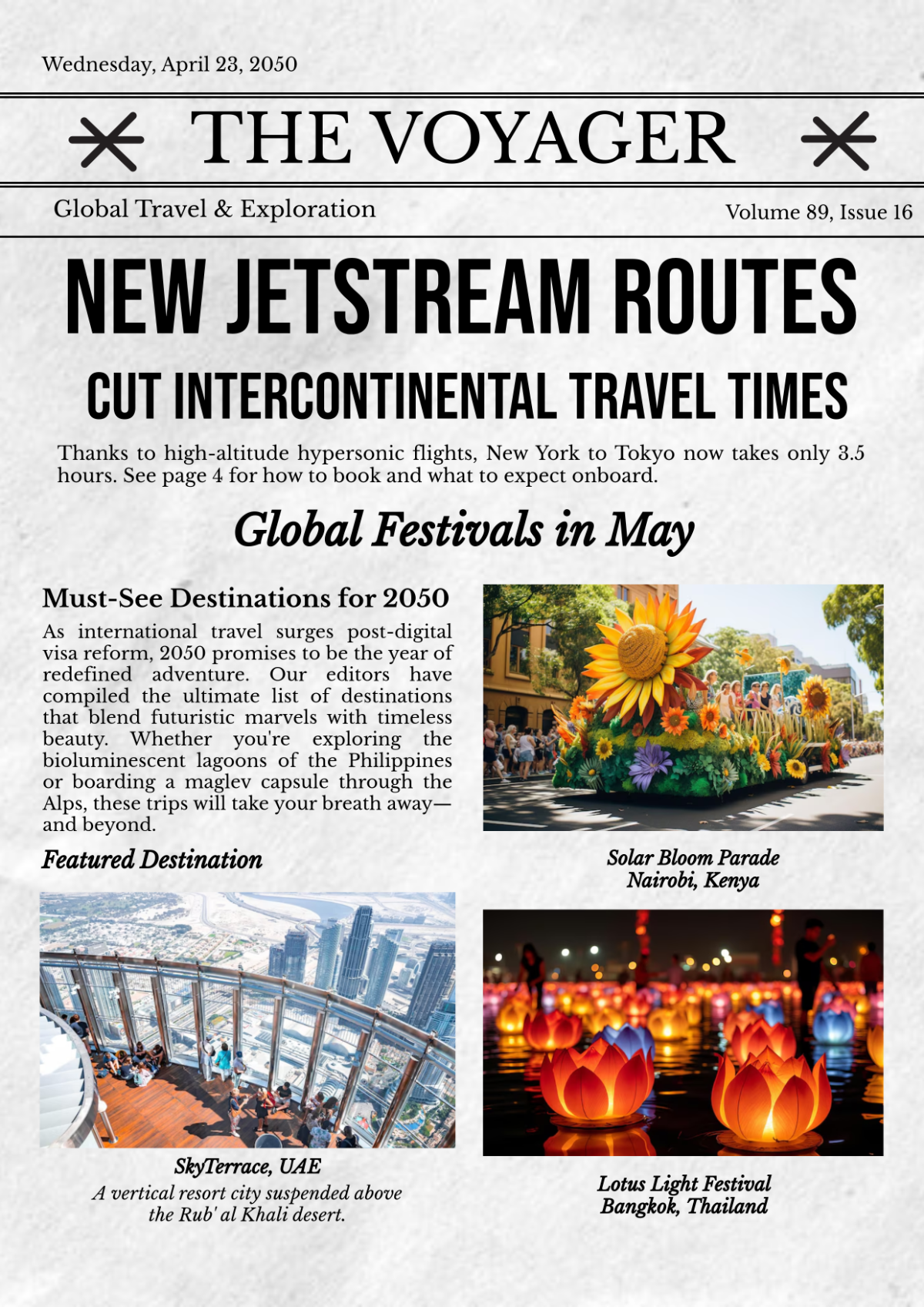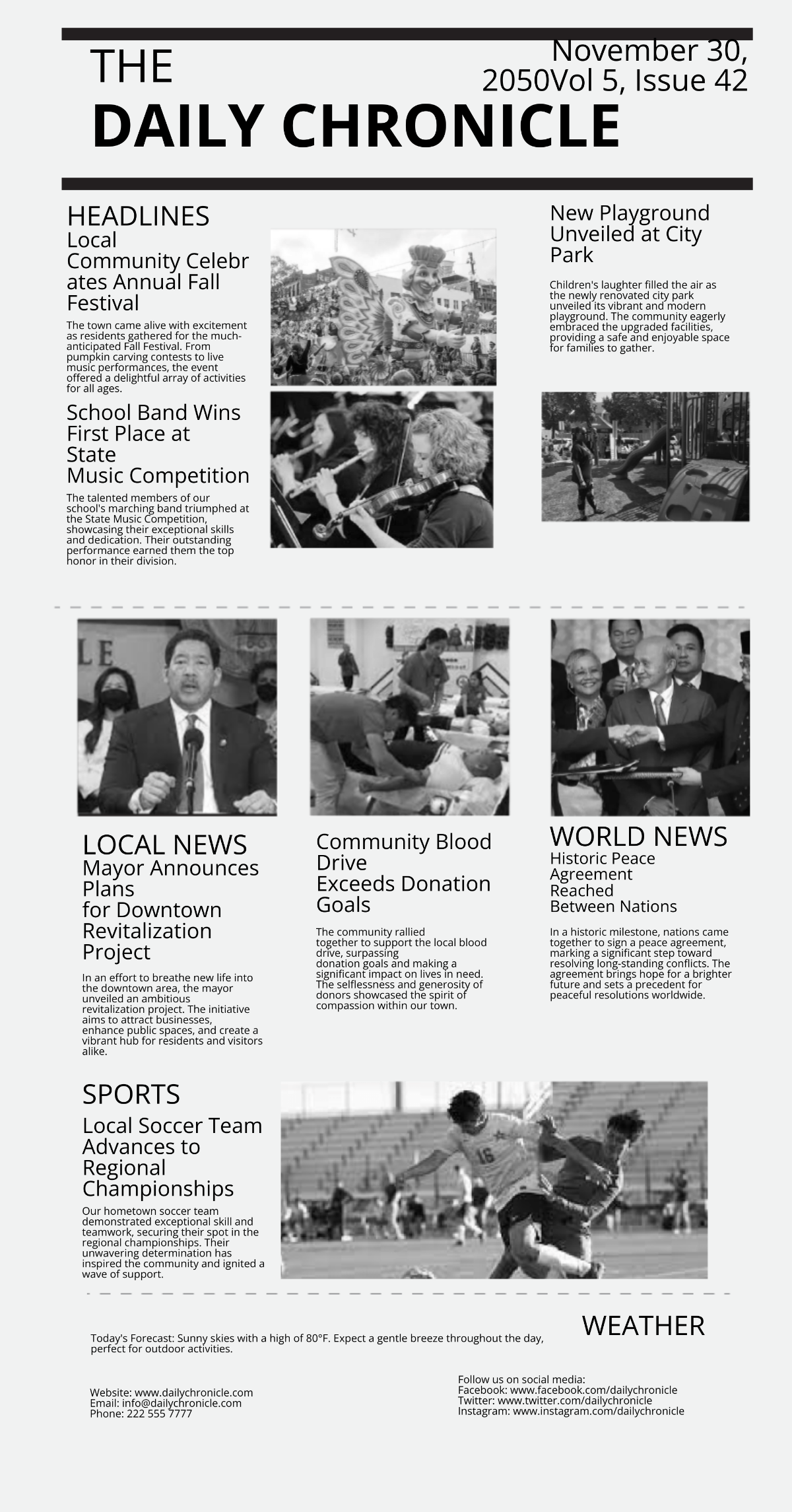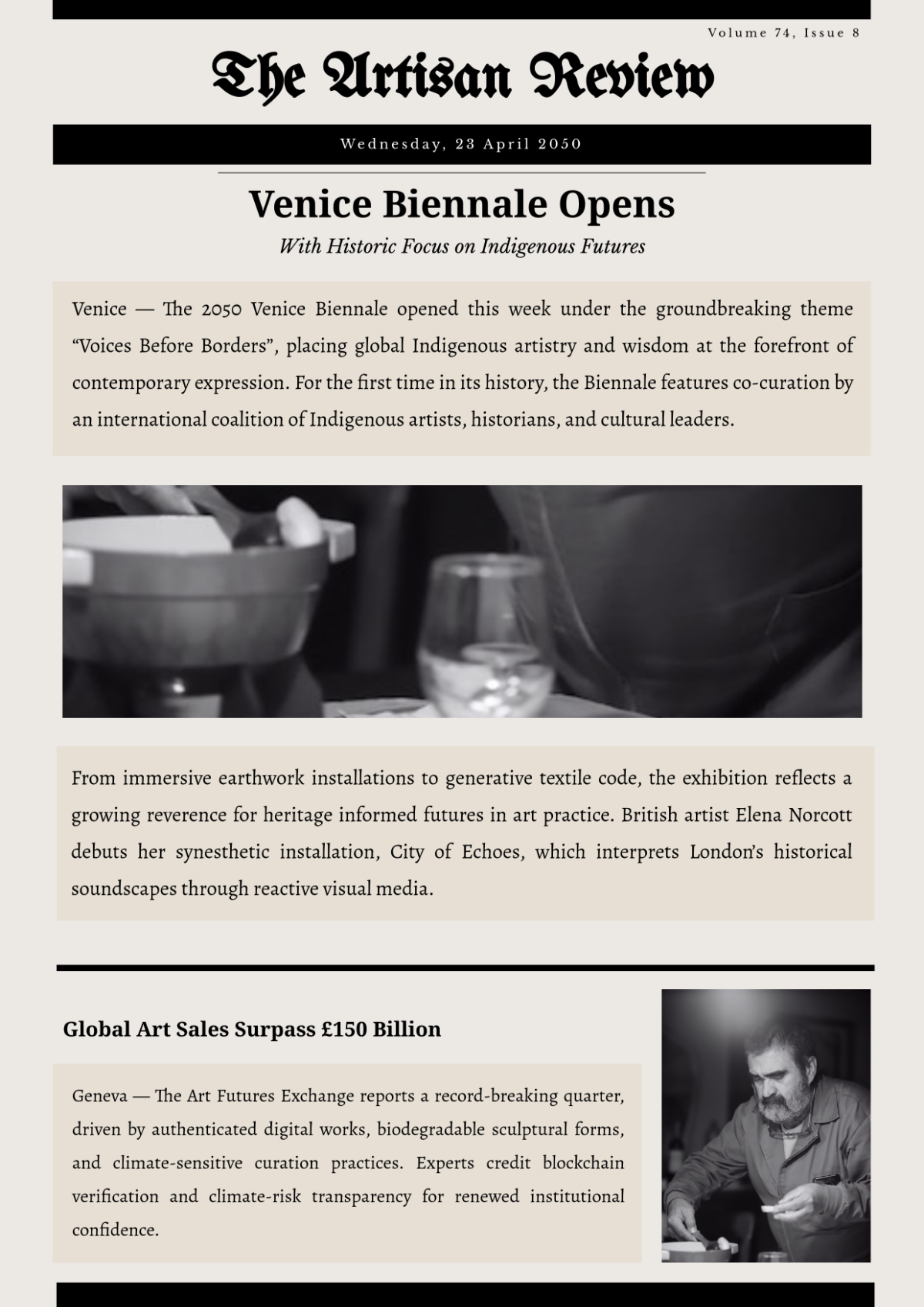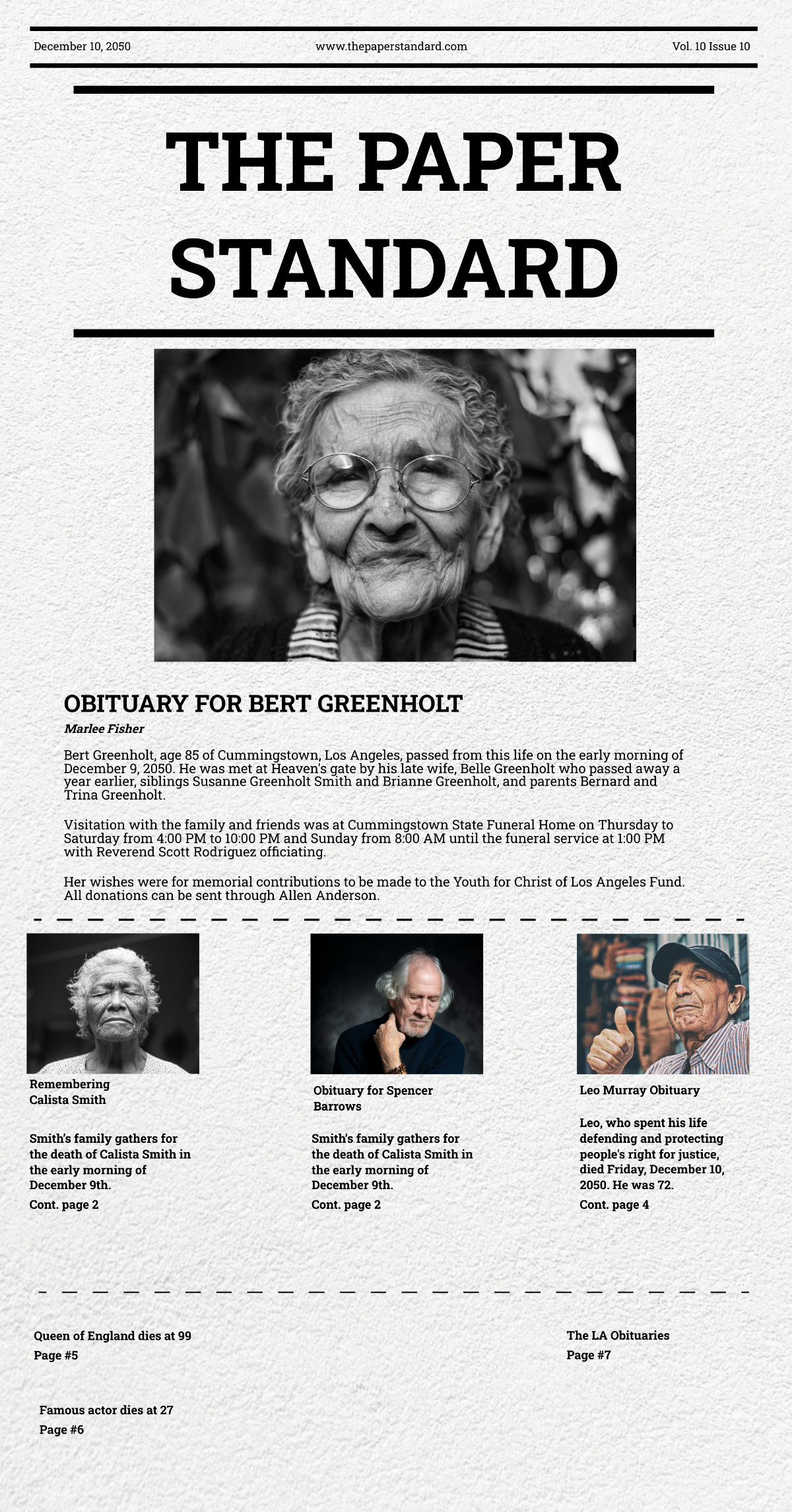Newspaper Report Layout
1. Headline
The headline is the most prominent part of the newspaper report. It must be concise, engaging, and informative, capturing the essence of the story.
Font: Large, bold font (e.g., 72-96 pt), typically in all caps.
Placement: At the top of the page, centered.
Content: The headline should summarize the main point of the report in 10-12 words.
2. Subheadline (Optional)
A brief sentence or paragraph that provides additional context or details about the story, supporting the headline.
Font: Slightly smaller than the headline (e.g., 36-48 pt), and can be in regular case or title case.
Placement: Directly below the headline.
Content: Should offer a more specific glimpse into the report, elaborating on the key points introduced in the headline.
3. Byline
The byline identifies the reporter or journalists who have written the story.
Font: Smaller font than the subheadline (e.g., 12-16 pt).
Placement: Below the sub headline or headline, on the left or right side.
Content: It includes the reporter’s name and may also include the publication date or location (e.g., “By John Doe, December 12, 2050”).
4. Lead Paragraph
This is the opening paragraph of the report, summarizing the most critical information of the story. It should answer the who, what, when, where, why, and how.
Font: Same as the main text (e.g., 12-14 pt).
Placement: After the byline, beginning on the left side.
Content: A succinct and clear summary, ideally within 2-3 sentences, that provides a quick snapshot of the event or issue.
5. Body
The body contains the detailed information about the story. It is often divided into several paragraphs.
Font: Consistent with the lead paragraph (e.g., 12-14 pt).
Spacing: 1.5-line spacing for readability.
Paragraph Structure: Each paragraph should focus on a single aspect of the report, and the paragraphs should flow logically from one to the next.
Content: The body expands on the key points, with details, quotes, statistics, and background information. Use direct quotes from relevant sources and provide context where necessary.
6. Quotes
Direct quotes from witnesses, experts, or sources can be placed within the body. These add credibility and human interest to the report.
Font: Same as body text (e.g., 12-14 pt).
Placement: Enclosed in quotation marks, placed on a new line, and indented for emphasis.
Content: Only include quotes that are relevant and important for understanding the story. Make sure the quotes are accurate and not taken out of context.
7. Dateline
The dateline includes the location and date the report was written or filed.
Font: Smaller than the body text (e.g., 10-12 pt).
Placement: Placed before the byline or at the beginning of the first paragraph.
Content: For example, “New York City, December 12, 2050” or similar for other locations.
8. Supporting Visuals (Images, Charts, etc.)
Size: Images or charts should be large enough to be visible but not overpowering the text.
Placement: Typically positioned next to or near the relevant sections of the article. Images are often placed in the top or middle of the page.
Content: Photos should be high quality and relevant to the story. Always include captions below images to explain what they depict. The caption must briefly describe the image’s relevance to the article, including the source (e.g., “Photo by Jane Smith/ABC News”).
9. Conclusion
The conclusion wraps up the article by reinforcing the most critical points and providing any final insights or calls to action.
Font: Same as the body text (e.g., 12-14 pt).
Placement: It should be the final paragraph or a closing sentence that gives readers a final thought or call to action.
Content: A succinct closing that does not introduce any new information, ensuring that the story feels complete.
10. Sidebar (Optional)
A sidebar is a secondary element that provides additional details, related stories, or background information. It is often a short, separate block of text.
Font: Same as body text or slightly smaller.
Placement: Typically positioned beside the main article, in a narrower column.
Content: Short, factual pieces that complement the main article. Examples include timelines, fact boxes, or summaries of related topics.
11. Footer (Optional)
A footer may contain credits for the report (if applicable), legal disclaimers, or publishing information.
Font: Small font size (e.g., 8-10 pt).
Placement: At the bottom of the page.
Content: Information such as “Published by XYZ News Agency” or “© 2050 XYZ News Agency. All rights reserved.”
12. Additional Considerations
Headline & Body Text Consistency: Ensure font styles and sizes are consistent across the layout to maintain readability.
Spacing and Alignment: Use adequate white space between paragraphs and around images to avoid clutter. Align text properly (usually left-aligned for readability).
Punctuation and Grammar: Double-check punctuation, spelling, and grammar for accuracy. Use correct citations for sources and quotes.
Relevance: Only include necessary information. Avoid unnecessary jargon or filler. Keep the report concise and to the point.

















































